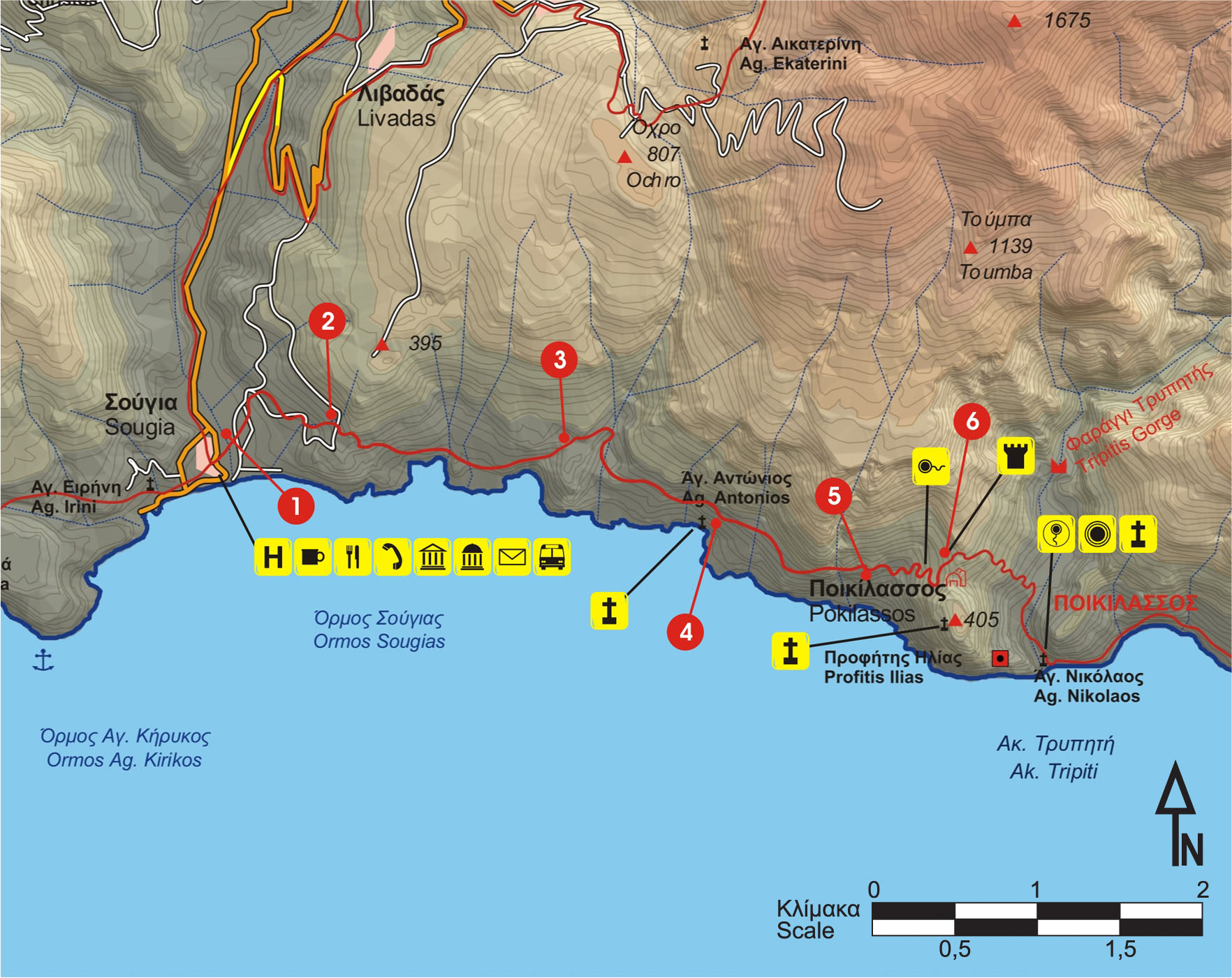Having the current settlement of Sougia (1) (which is built on the west side of the stream that we cross) as a starting point, we walk along the north boundary of ancient Syia. Then, we begin to ascend the slope in a north-easterly direction, until we find a cart track on our right, which we follow.
The cart track winds round the slope, until a small plateau with terraces and remnants of old structures (2).
From this point, the entire bay of Sougia, as well as the unique landscape created by the outlines of mountains sloping down to the sea to the east, open out in the distance.
At the end of the cart track, we follow the path that crosses a landscape in which pine trees alternate with carob trees and shrubs. Descending slightly, we cross a small stream and then reach an old threshing floor, in a terraced area, on our right.
Down below to our right are small rocky beaches. Next, the path goes slightly up and down along the hill.
We cross several small streams, until we see a characteristic cliff above us, to our left. As soon as we reach the opposite bank of the stream we encounter, we climb to a saddle (3) and we immediately begin to descend the steep slope along the old path, until the small gorge, which we follow south.
Approximately 200 m after we pass by a characteristic cave, we leave the stream and come out onto its eastern bank. After a while, we see the small bay of Agios Antonios (4) ahead of us, which we bypass, following the path along the slope, going slightly up and down.
Alternatively, we can take a right-hand side road which descends to the chapel of Agios Antonios and then rejoins the main path.
The distinct path crosses a landscape of alternating high and low vegetation and small streams.
Having left Agios Antonios and begun to descend slightly, approaching a small stream, we see an impressive deep cleft in the rock on our left. After this point, in order to cross the stream, we walk along it for 100 m and then we come out onto its eastern bank (5).
After the stream, we begin to ascend the steep slope towards ancient Pikilassos. The path now becomes very steep and winds among pine trees and the rocks of the slope until we reach a small stone shrine and immediately after that, a spring with potable water.
After the spring we continue uphill. On our right we see a characteristic rock, after which the trail turns sharply to the left, crossing the ruins that are scattered on the slope, until the remnants of the fortress in the saddle of Pikilassos (6).
This section of the route is one of considerable difficulty, especially with northern winds.
From this point, enjoying a lovely view of Sougia to the west and to the east, until Domata, we may ascend to the top of the hill, where the chapel of Profitis Ilias is located.
Here, the view is panoramic and of breathtaking beauty; we can distinguish Lissos, Sougia, Domata, a big part of the Lefka Ori massif, and the island of Gavdos, south, in the distance.






